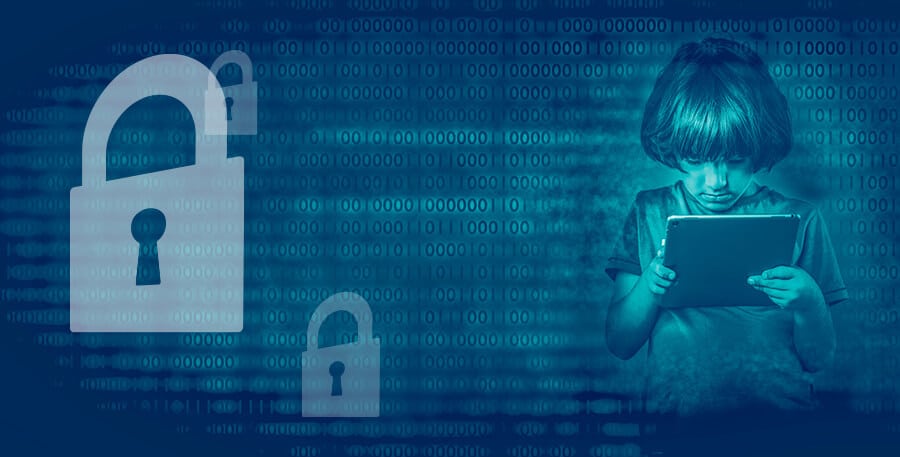It is almost impossible to discuss the prevalence of the internet in most young people’s activities without sparing the time and attention to talk about its side effects and shortcomings. With this piece, we want to raise awareness of Cyber Extortion and everyone's vulnerability to being blackmailed online. Also known as sextortion, Cyber Extortion a form of cyberbullying where someone threatens to share intimate images of you online unless you do what is requested. In this article, you will learn what is digital hygiene and practical tips on how to keep yourself and your loved ones safe online.
Sextortion is a negative phenomenon, listed among cyberbullying forms, characterised by “the threatened dissemination of explicit, intimate, or embarrassing images of a sexual nature without consent, usually for the purpose of procuring additional images, sexual acts, money, or something else.” The term sextortion contains the two words “sex” and “extortion”. Generally, extortion means taking advantage of the other person, without his or her will, by threats, violence or harm. In sextortion, this means blackmailing the victim to disseminate sexually explicit images.

Acknowledging the challenge is not sufficient. In addition to highlighting everyone’s vulnerability to cyberbullying, we will also explore some of the basic precautionary measures.
A part of this article is a discussion with the experienced technology writer, Adi Gaskell, who constantly provides fresh insights on the business of cybersecurity. He will share with Youth Time readers some of the causes of sextortion and its consequences, as well as elaborate on his recent piece “The Rise in Sextortion Online”, in which he, among other things, claims that as the COVID-19 Pandemic has spread throughout the world, cybercriminals have been taking advantage of the chaos to increase their activities.
Why Sextortion Presents a Growing Public Concern
Barton Scott is a registered sex offender in the U.S. who has hacked and accessed dozens of young people’s Snapchat accounts, gaining unauthorized access to explicit images of 14- to 16-year-old girls. In 2019, he was sentenced to 25 years in prison for committing sextortion crimes.
This an example is to illustrate the growing concern about the online abuse of the young by sextortion. Worrisome data have been published from several studies.
Research conducted by the Cyberbullying Research Center indicates that, on average, about 28% of the students who have been a part of the Center’s most recent 11 studies have said they have been victims of cyberbullying at some point in their lives. The Center has surveyed more than 25,000 students from middle and high schools from across the United States in thirteen unique projects.
Also, according to Brookings Institution, in 71% of the sextortion cases victims are under the age of 18, 14% of cases involve a mix of minor and adult victims, whereas 12% of cases involve only adults. Perpetrators tend to have multiple victims, generally varying from 10 to more than 100, according to the same source.
The following, concerning statistics about sextortion are also presented by a research project conducted by the University of New Hampshire, in which are elaborated findings from from a survey of 1,631 victims.
- The more serious cases involved stalking and physical and sexual assault in addition to sextortion and threats that lasted for 6 months or more.
- Perpetrators carried out threats or otherwise harmed respondents in about 45% of cases, more frequently in the face-to-face relationship group than in the online encounter group, and disseminated sexual images in about 30% of cases.
- The personal and psychological toll on respondents could be quite intense, with 24% seeing a medical or mental health practitioner and 12% having to move as a result.
- Shame, embarrassment and self-blame were common feelings that kept many respondents from seeking help from friends and family or from reporting to technology companies that ran websites or apps used for sextortion.
Covering the camera of the laptop is neither a cliché nor an overreaction when it comes to the online safety of young people.
Pandemic and Its Relation to the Rise of Cyberbullying

In this section, Gaskell elaborated on some of the causes of sextortion and its consequences, how we can keep good digital hygiene, and the crucial precautionary measures one can follow to stay safe in the colossal universe of the internet.
The Pandemic’s impact was noted in this matter as well.
“One of the notable developments in the early stages of the Pandemic was the move by PornHub to make their premium service available to everyone for free. Couple this with lockdown measures forcing all of us to spend far more time at home than ever before, and it’s perhaps not surprising that pornography usage rose considerably.” Gaskell explains.
“That people have been using pornography more, and that people were using it who haven’t been using it previously, coupled with the general stresses associated with the Pandemic, render people especially vulnerable to scams, such as sextortion, where criminals blackmail people with threats of disclosing private images of people,” he further adds.
Understanding How the Internet Works – the First Step toward Digital Hygiene
Gaskell is of the opinion that the key thing for young people to be aware of is just how the internet works.
“A good phrase to define this is ‘digital hygiene’, which basically involves both understanding how the web works, and then working to make sure you are as safe as possible when using the web. I know the European Commission has been piloting some classes in schools in Germany to help young people develop this awareness, but as with so much, knowledge is the first step.”
In support of this we advise you to read a previous Youth Time piece “Digital Awareness, as Part of Today’s Survival Kit”, where technology experts discuss strategies to establish a more definitive relationship with technology.
“This could include how your data is valuable to companies, how that data (and specifically your social media posts) are accessible, especially by employers, criminals, teachers, and so on, and the various ways in which criminals may wish to exploit you online today.”
Building Good Habits to Keep Yourself Safe Online
In conclusion, let’s take a look at some of the key precautionary measures that young people can take in order to protect themselves from this version of cybercrime.
“Obviously getting a good virus application is the first line of defense, but having an awareness of how criminals could exploit you is another.” Gaskell says, by listing the following questions, as a handful of good habits one can develop to maintain online safety.
- Are you aware of how your data could be used against you or your identity stolen?
- Are you able to spot a phishing email from a real email?
- Do you have secure and robust passwords that are changed regularly?
The sophisticated technological world we are living in makes it more than a moral duty to be aware, to help and protect young adults against cyberbullying, which as seen above, they are very likely to face.
Photos: Shutterstock / Photomontages: Martina Advaney
Photo: From the Personal Archive of Adi Gaskell
Encouraging you to stay informed about the sensitivity of the online world, we suggest you these related Youth Time articles:
Is It About Time We Recognize Internet Access as a Human Right?
Support us!
All your donations will be used to pay the magazine’s journalists and to support the ongoing costs of maintaining the site.
Share this post
Interested in co-operating with us?
We are open to co-operation from writers and businesses alike. You can reach us on our email at [email protected]/[email protected] and we will get back to you as quick as we can.










